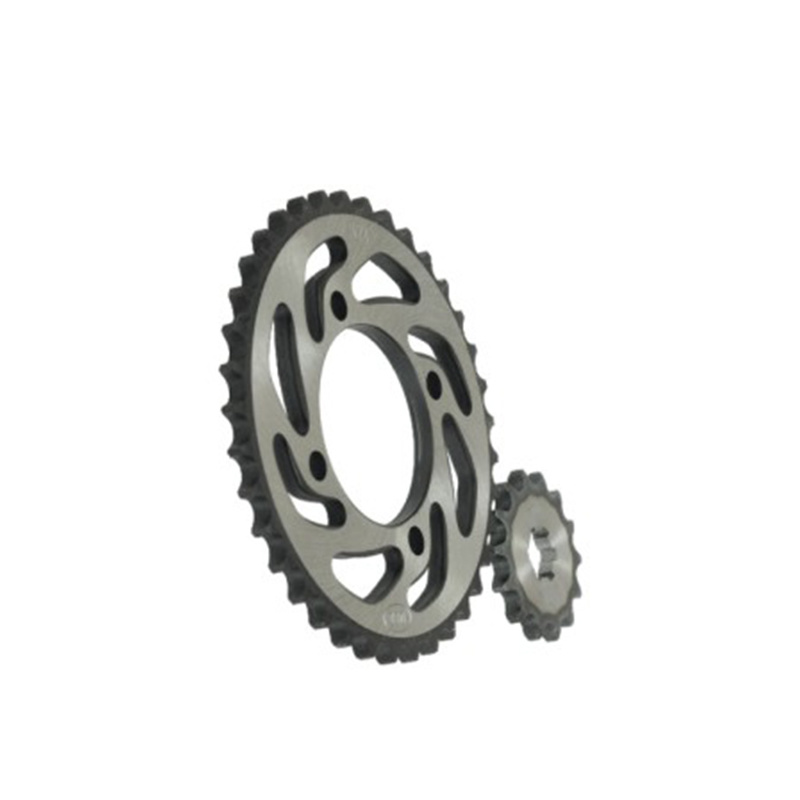Understanding Chains and Sprockets: Essential Components in Industrial Equipment
May 02,2025

Chains and sprockets are fundamental components in various industrial applications, playing a crucial role in the transmission of power and motion. Their effective operation is vital for the smooth functioning of machinery, making it essential to understand their characteristics, types, and maintenance practices.
The primary function of a chain in a power transmission system is to transfer mechanical energy from one component to another, typically from a motor to a driven component. Chains are designed to handle heavy loads and are known for their durability and strength. Typically made from high-carbon steel, chains come in various types, including roller chains, block chains, and leaf chains, each tailored for specific applications.
Sprockets are toothed wheels that engage with chains, enabling the transfer of motion. They can be classified based on the number of teeth, pitch, and diameter. The relationship between the chain and sprocket is critical; the sprocket's design must correspond to the chain type to ensure proper engagement and minimize wear. A well-matched chain and sprocket enhance the efficiency of the system, reducing energy loss and prolonging equipment life.
Proper maintenance is essential for the longevity and efficiency of chains and sprockets. Regular inspection for wear and tear is vital, as worn-out components can lead to chain slippage or breakage, resulting in costly downtime. Lubrication is another critical aspect; applying the correct lubricant minimizes friction and wear, ensuring smooth operation. It is also important to check the alignment of the chain and sprocket to prevent uneven wear and potential failure.
Operating conditions play a significant role in determining the lifespan of chains and sprockets. Environmental factors such as humidity, temperature, and exposure to corrosive substances can impact their performance. Selecting the appropriate materials and coatings can help mitigate these effects, enhancing the components' resistance to harsh conditions.
In summary, understanding the role of chains and sprockets in industrial settings is crucial for ensuring the efficiency and reliability of machinery. By selecting suitable types, adhering to maintenance practices, and considering environmental factors, industries can optimize their power transmission systems, reducing downtime and maintenance costs. Whether you're operating a complex manufacturing line or simple mechanical equipment, the effective use of chains and sprockets can significantly impact overall operational efficiency and productivity.
The primary function of a chain in a power transmission system is to transfer mechanical energy from one component to another, typically from a motor to a driven component. Chains are designed to handle heavy loads and are known for their durability and strength. Typically made from high-carbon steel, chains come in various types, including roller chains, block chains, and leaf chains, each tailored for specific applications.
Sprockets are toothed wheels that engage with chains, enabling the transfer of motion. They can be classified based on the number of teeth, pitch, and diameter. The relationship between the chain and sprocket is critical; the sprocket's design must correspond to the chain type to ensure proper engagement and minimize wear. A well-matched chain and sprocket enhance the efficiency of the system, reducing energy loss and prolonging equipment life.
Proper maintenance is essential for the longevity and efficiency of chains and sprockets. Regular inspection for wear and tear is vital, as worn-out components can lead to chain slippage or breakage, resulting in costly downtime. Lubrication is another critical aspect; applying the correct lubricant minimizes friction and wear, ensuring smooth operation. It is also important to check the alignment of the chain and sprocket to prevent uneven wear and potential failure.
Operating conditions play a significant role in determining the lifespan of chains and sprockets. Environmental factors such as humidity, temperature, and exposure to corrosive substances can impact their performance. Selecting the appropriate materials and coatings can help mitigate these effects, enhancing the components' resistance to harsh conditions.
In summary, understanding the role of chains and sprockets in industrial settings is crucial for ensuring the efficiency and reliability of machinery. By selecting suitable types, adhering to maintenance practices, and considering environmental factors, industries can optimize their power transmission systems, reducing downtime and maintenance costs. Whether you're operating a complex manufacturing line or simple mechanical equipment, the effective use of chains and sprockets can significantly impact overall operational efficiency and productivity.
PREVIOUS:
Contact Us
E-mail :andyzhou@rqfeituo.com
Phone/WhatsApp:+86 18610219389
Address:Fujia Village, Shimenqiao Town, Renqiu City, China




